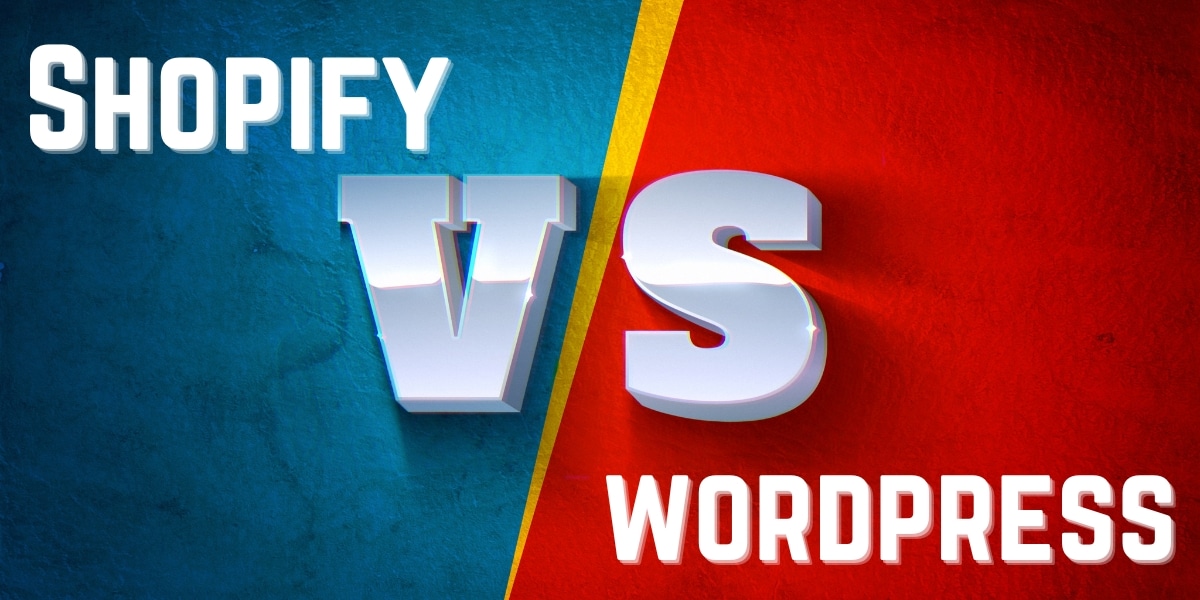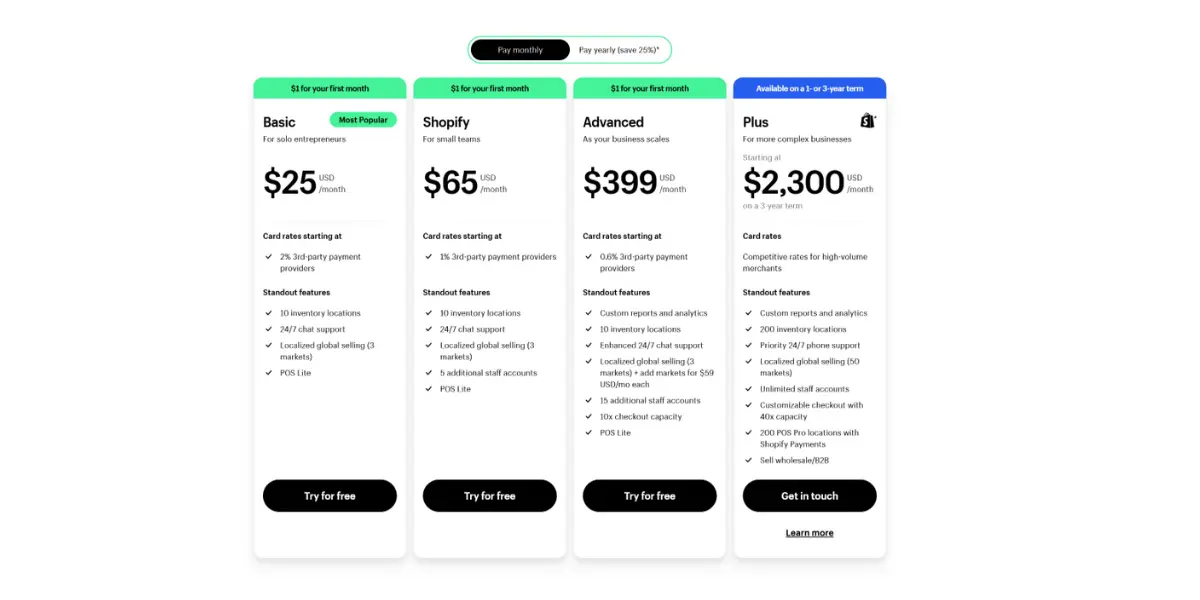Introduction:
When starting an online store, choosing the right platform is crucial for success. Two of the most popular options are Shopify and WordPress with Woo Commerce. Both platforms offer distinct advantages, but which one is the best fit for your business?
Shopify is a hosted solution, perfect for beginners who want an easy setup and integrated tools to run their store. It provides built-in payment options, security, and customer support.
On the other hand, WordPress with Woo Commerce gives you more control and customization. It’s ideal for those who need flexibility and are comfortable managing their site.
This guide compares both platforms based on key factors like pricing, ease of use, customization and scalability helping you choose the best option for your business goals.
Overview of Shopify and WordPress
Shopify
It is a well-known platform designed to help businesses of all sizes build and manage their online stores.
Key Features for Small Businesses
Shopify offers a range of features, including:
- User-Friendly Payment Options: Easily integrated payment solutions.
- Customizable Themes and Templates: Simplifies store setup.
- Beginner-Friendly Interface and Security: Ideal for entrepreneurs and new users.
Tools for Managing an Online Store
Shopify also provides:
- Point-of-Sale (POS) Systems: Facilitates in-person sales.
- App Integrations: Enhances functionality through Shopify’s app store, which includes:
- Marketing Tools
- Advanced Analytics
These advantages make Shopify ideal for small businesses looking for a secure, efficient way to grow their online presence.
WordPress: A Versatile Website Platform
WordPress
It is a widely-used platform that enables users to create various types of websites, including blogs, business sites, and online stores.
WordPress and Woo Commerce: A Flexible Ecommerce Solution
By adding the Woo Commerce plugin, WordPress becomes a powerful tool for building ecommerce websites. It allows WordPress users to add powerful ecommerce features, transforming a standard website into a fully functional online store.
Benefits of Customization with WordPress
One of WordPress’s greatest strengths is its extensive customization options, which allow users to:
- Create unique designs with countless themes and plugins.
- Tailor the look and functionality of their store to fit specific needs.
Woo Commerce Plugins and SEO Benefits
Woo Commerce offers a wide variety of:
- Plugins and Extensions: Includes tools for payment gateways, marketing, and more.
- SEO-Friendly Features: Enhances search engine rankings, driving traffic to online stores.
For those who need flexibility and control over their online store, WordPress is an excellent choice.
Pricing Breakdown
Shopify Pricing Structure for Small Businesses
Shopify offers different subscription plans to fit various business needs. Their monthly fees start from as low as $25 USD and go up to $2,300 USD per month, depending on the plan and features included. For those just starting out, the Basic plan is a popular choice, costing $25 USD per month. As businesses grow, they can upgrade to higher-tier plans, like the Shopify and Advanced options, which provide more tools and support.
Overview of Shopify Subscription Plans
- Basic Plan ($25/month): Ideal for solo entrepreneurs, with 10 inventory locations, POS Lite, and 24/7 chat support.
- Shopify Plan ($65/month): Suitable for small teams, adding features like 5 extra staff accounts.
- Advanced Plan ($399/month): Designed for growing businesses needing custom reports, advanced analytics, and a 15-staff account limit.
- Plus Plan ($2,300/month on a 3-year term): For high-volume merchants, with 200 inventory locations, priority support, and B2B selling features.
Each plan comes with different transaction fee rates, starting from 2% on the Basic plan and lowering to 0.15% on the Advanced plan for third-party payment providers. Shopify’s annual plan pricing also offers 25% discounts for those paying yearly, helping businesses save on overall costs.
Shopify Plan Comparison and Best Choice for Small Businesses
The Shopify plan comparison shows that each tier is designed for different business sizes and needs. For small businesses, the Basic or Shopify plans are usually sufficient, offering the essential tools for online selling at an affordable price. Upgrading to the Advanced or Plus plans may be beneficial for larger stores needing more staff accounts, detailed analytics, and global selling features.
Understanding WordPress and Woo Commerce Pricing
Hosting Costs and Options
The first cost to consider is hosting. Hosting plans for WordPress vary based on factors like storage, speed, and security, typically ranging from $10 to $50 per month. Popular WordPress ecommerce hosting options include providers like Bluehost, Site Ground, and Name cheap. These hosts offer optimized plans specifically for ecommerce sites built on WordPress.
While Woo Commerce itself is free, there are fees for premium plugins that add advanced features. Woo Commerce plugin pricing can range from $20 to $300 per year, depending on the functionality. For example, store owners might invest in plugins for SEO, shipping, or inventory management.
Ecommerce Theme Costs
To create a professional look, many businesses choose premium WordPress themes tailored for ecommerce. These themes typically cost between $30 and $100, either as a one-time or annual fee, and provide customization options and support to enhance the site’s appearance.
Transaction and Payment Gateway Fees
Another significant expense involves transaction and payment gateway fees.. Woo Commerce doesn’t charge its own transaction fees, but payment processors like Stripe and PayPal do. These gateways typically charge around 2.9% + $0.30 per transaction, so it’s important to select an option that aligns with your budget.
Key Comparison Factors
Ease of Use
When it comes to ease of use, Shopify is often praised for its simple interface and quick setup process. Even beginners can quickly set up their online stores without any technical knowledge. In contrast, while Woo Commerce is also user-friendly, it requires a bit more work to manage, especially when it comes to hosting and updates. Shopify provides an all-in-one solution, making it easier for users to focus on running their store.
Design and Customization
In terms of design and customization, both platforms offer a variety of themes. Shopify provides a wide selection of ready-made templates, and you can customize them to fit your brand. However, Woo Commerce offers more flexibility for design, allowing users to use various plugins and custom CSS. If you want complete control over the appearance of your store, Woo Commerce might be the better choice, but it requires more effort.
SEO and Marketing Tools
For SEO and marketing tools, Shopify comes with built-in SEO features, like customizable title tags and meta descriptions, which make it easier to optimize your store for search engines. It also offers marketing tools like email campaigns and social media integration. On the other hand, Woo Commerce has a number of SEO plugins available to enhance optimization. It also provides extensive integration with marketing tools, but you may need to install third-party extensions.
Payment Options and Transaction Fees
When comparing payment options and transaction fees, Shopify supports a wide range of payment gateways and offers its own payment system. However, transaction fees apply if you don’t use Shopify Payments. Woo Commerce supports multiple payment methods without extra transaction fees, but you’ll need to manage everything, including payment processing costs, on your own. Overall, Shopify provides more convenience, while Woo Commerce offers more cost flexibility.
Scalability and Performance
Regarding scalability and performance, Shopify is designed to handle growth. Its platform supports high traffic without much effort from users. As your business expands, Shopify’s performance remains consistent. Woo Commerce can also handle growth, but it requires more attention to hosting and performance optimization. It’s best suited for users with a little more technical knowledge to ensure the store runs smoothly as it grows.
Shopify vs WordPress for Drop shipping
Why Drop shipping Matters
Drop shipping is a popular ecommerce model because it allows you to sell products without holding inventory. This makes it easy to start an online store with minimal upfront costs. You only purchase items from suppliers when you make a sale. This flexibility is one of the reasons drop shipping has become so appealing to entrepreneurs.
Drop shipping with Shopify
Shopify is a great platform for drop shipping due to its built-in integrations with drop shipping suppliers like Oberlo and Spocket. These apps help you quickly find products to sell and automatically manage inventory and orders. The platform is easy to use, allowing store owners to get started without technical skills. Shopify’s seamless setup and extensive app availability make it an attractive choice for drop shipping.
Drop shipping with WordPress
Woo Commerce on WordPress offers more customization for drop shipping stores. With various plugins available, you can add different features, such as automated inventory management or custom shipping options. However, Woo Commerce requires more setup and maintenance. You’ll need to manage plugins and hosting yourself, which can be a bit more challenging compared to Shopify’s all-in-one solution.
Best Choice for Drop shippers
For beginners or those looking for ease, Shopify is often the better choice. It simplifies the drop shipping process with its easy-to-use integrations and support. If you’re looking for more flexibility and customization and are comfortable managing your site, Woo Commerce can be a good option. It gives you more control but may require more effort to maintain.
Pros and Cons of Each Platform
Pros of Shopify
Shopify is a hosted solution, meaning everything you need is taken care of, including hosting and security. This is perfect for users who want a hassle-free experience. It offers ease of use with a simple drag-and-drop interface that makes building a store straightforward, even for beginners. Shopify also has excellent customer support and reliable uptime for your store. The platform has built-in payment processing and integrates with various payment gateways, making transactions smooth.
Cons of Shopify
One downside of Shopify is its limited customization compared to other platforms like Woo Commerce. While it offers many themes, deeper customization might require additional apps or technical knowledge. Another drawback is the transaction fees that apply if you don’t use Shopify Payments. These fees can add up quickly for businesses with high sales volumes.
Pros of WordPress with Woo Commerce
WooCommerce, powered by WordPress, is highly customizable. It allows you to tailor every aspect of your store, from design to functionality. With extensive plugin options, you can add features that suit your business needs such as advanced shipping options or custom checkout processes. It is also an open-source platform, so it offers complete flexibility in how you manage your store.
Cons of WordPress with WooCommerce
However, WooCommerce comes with a steeper learning curve. It requires more setup and maintenance, such as managing your hosting, security and updates. Unlike Shopify, which takes care of most technical aspects Woo Commerce users must handle server management and plugin compatibility issues. This can be challenging for beginners or those without technical skills.




